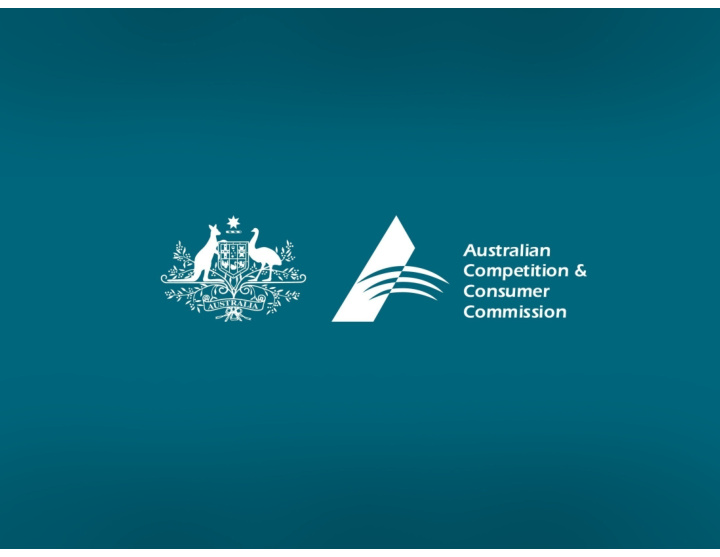



Product Safety in Australia Find important problems. Fix them. Tell everyone. Lauren Johnston Director, Product Safety Education & Governance Australian Competition & Consumer Commission Organisation of American States—CSHN Graduate Course Washington DC, USA 23 May 2012
Australian Consumer Law (ACL) • Regulatory environment: Competition and Consumer Act and the Australian Consumer Law • ACL provides a single national product safety regime • Contains mandatory reporting requirements • Federal Minister can issue public warning notices • ACCC provided with stronger powers to undertake market surveillance and enforce the new law
Bans and Standards—Mandatory regulations • Currently 61 bans and mandatory standards • Products must meet these mandatory regulations – Fines of up to $1.1 million for a corporation or $220,000 for an individual • Permanent vs interim bans • Voluntary regulations
Newer (and possible future) product safety regulations This year Last year • Trampolines • Bling dummies and dummy chains • Portable swimming pools • Tobacco graphic • Lead in ceramic health warnings dinnerware • Stability of domestic furniture • Corded internal window coverings
Surveillance and compliance • Expanded surveillance team – around Australia • Increased focus on proactive compliance � more work with industry � effectiveness evaluation
Identifying and addressing emerging hazards
Risk assessment • Benis nomograph • Clearinghouse • Product Safety Committee • Possible outcomes of a risk assessment
Detailed assessments • Detailed assessments can lead to – education campaigns (baby slings), – industry projects (drawstrings guideline), – proposals for new bans or standards, (‘bling’ dummies, trampolines, …) – Market surveys/testing (teeth whiteners, lithium button batteries) – Chemical exposure/risk assessments accessing whole-of-government data – recommendations for no action.
Emerging hazards – chemicals • New, dedicated chemicals section • Increased focus for compliance and enforcement work • Recent assessments: – Formaldehyde in hair straighteners – Hydrogen and carbamide peroxide in teeth whiteners – Nitrosamines in dummies and bottle teats – DMF in desiccant sachets – Lead in toys – Bromine in leather goods – Artificial turf
Product recalls
Recall effectiveness • What do we ask for? – the number of products returned from within the supply chain and from consumers – the number of complaints and inquiries that have been received regarding the product and the nature of these complaints – the number of inquiries that have been received from consumers regarding the recall and the nature of these inquiries – whether the supplier deviated from the original plan at all in relation to the communication strategy or any other strategies and the reasons why.
Product safety education • National online campaigns – Don’t be a Jackass • Voluntary supplier guidelines – Drawstrings in children’s clothing • Partnerships with stakeholders – The Battery Controlled – International film/AU version
Recommend
More recommend